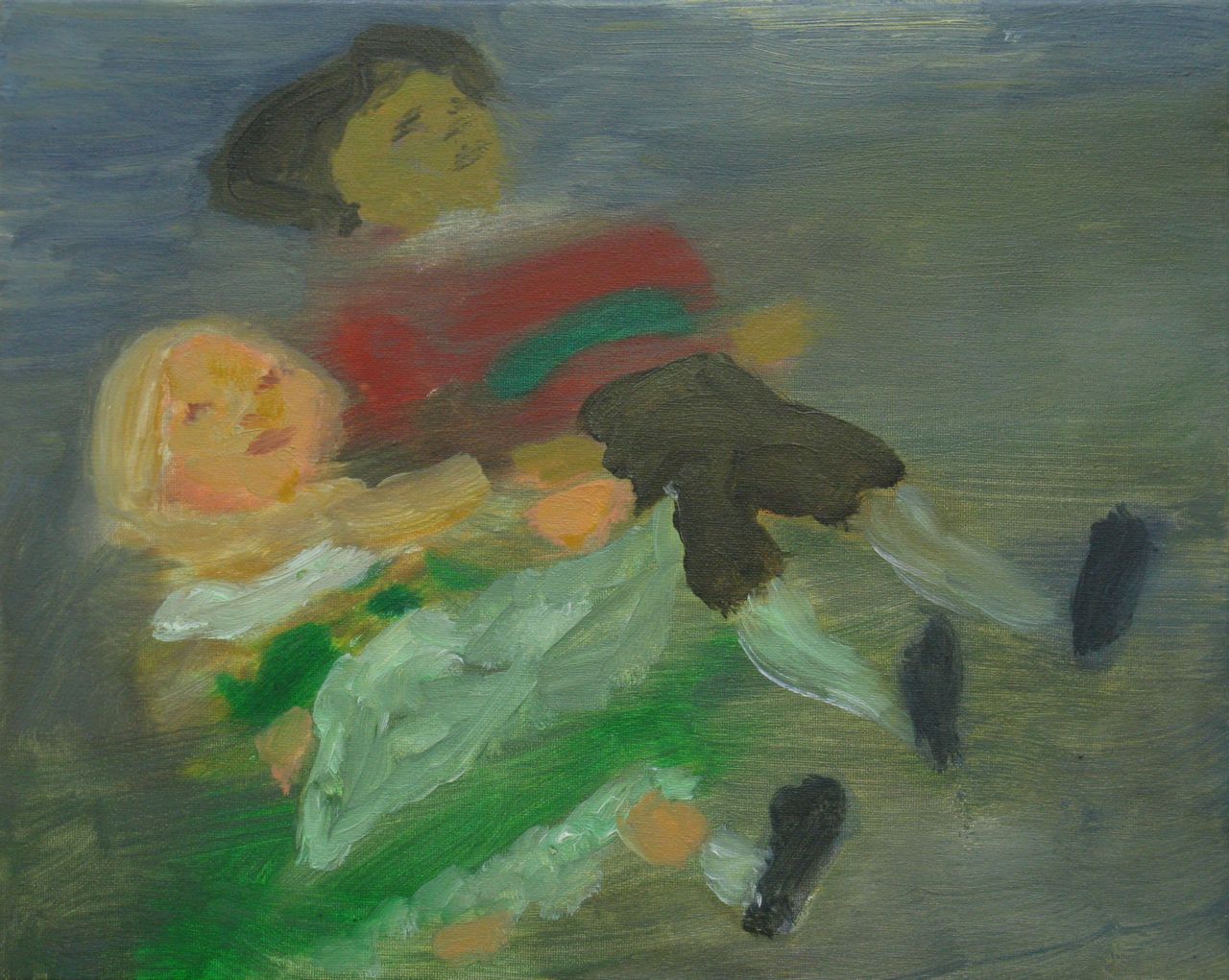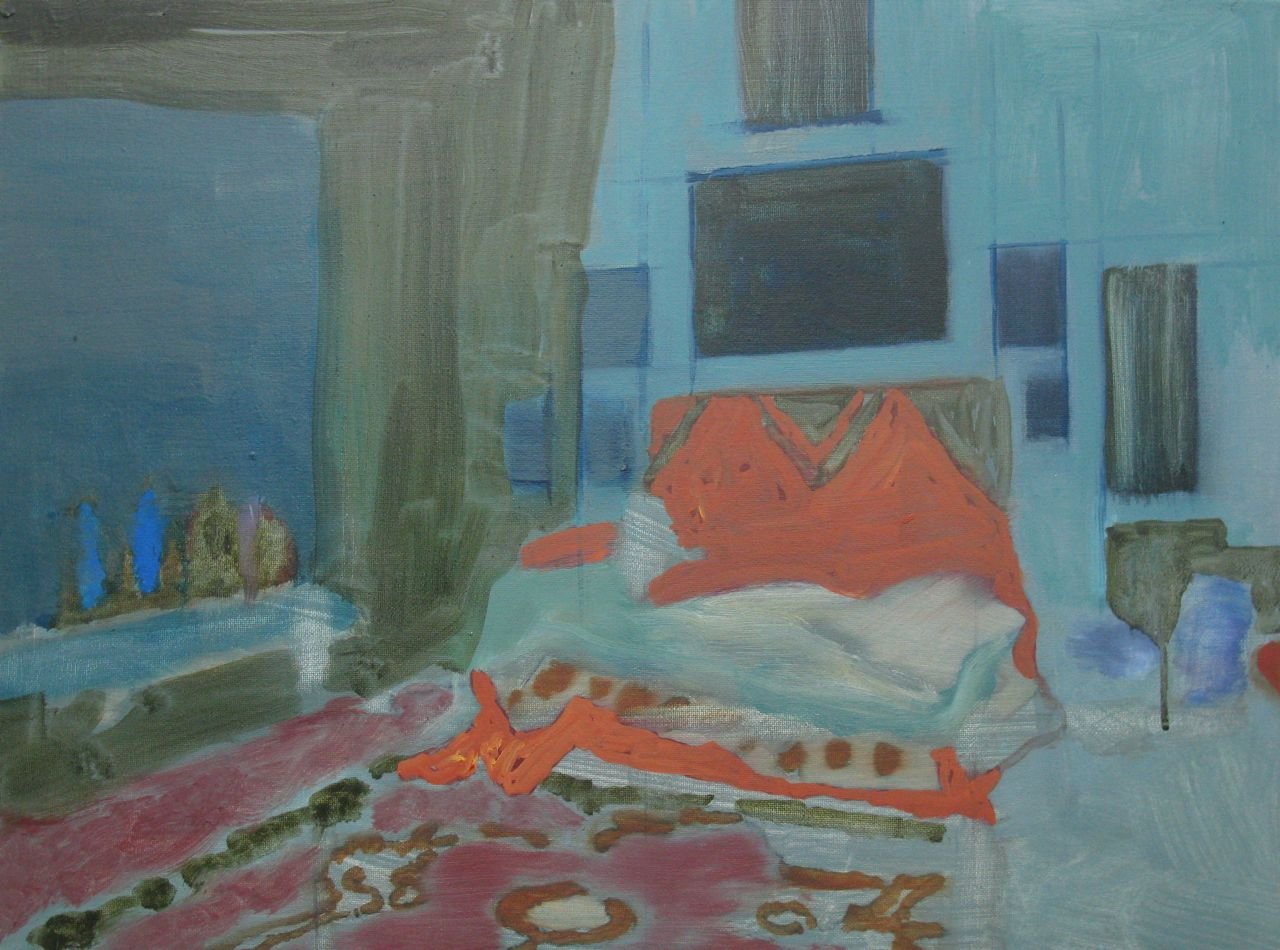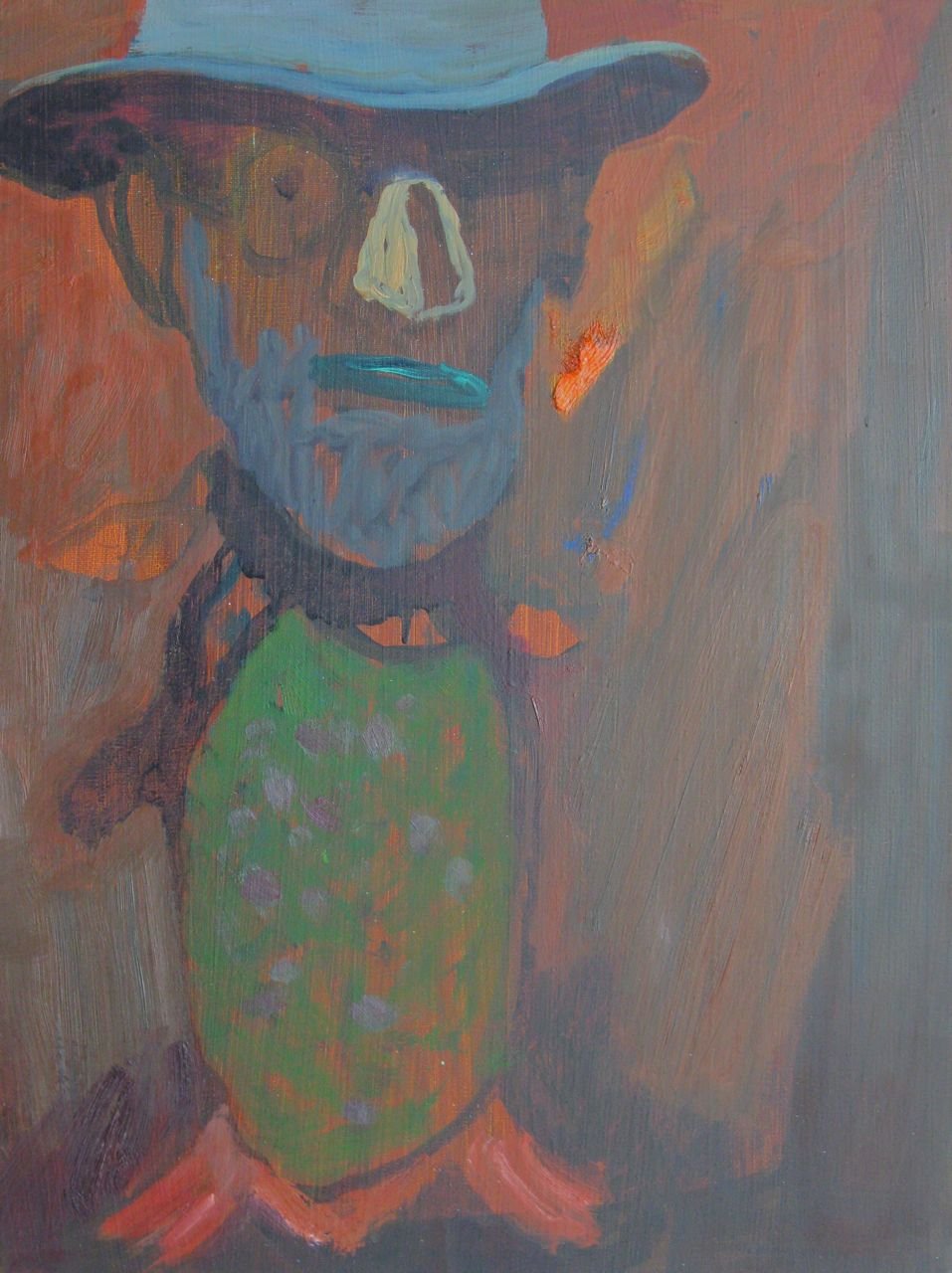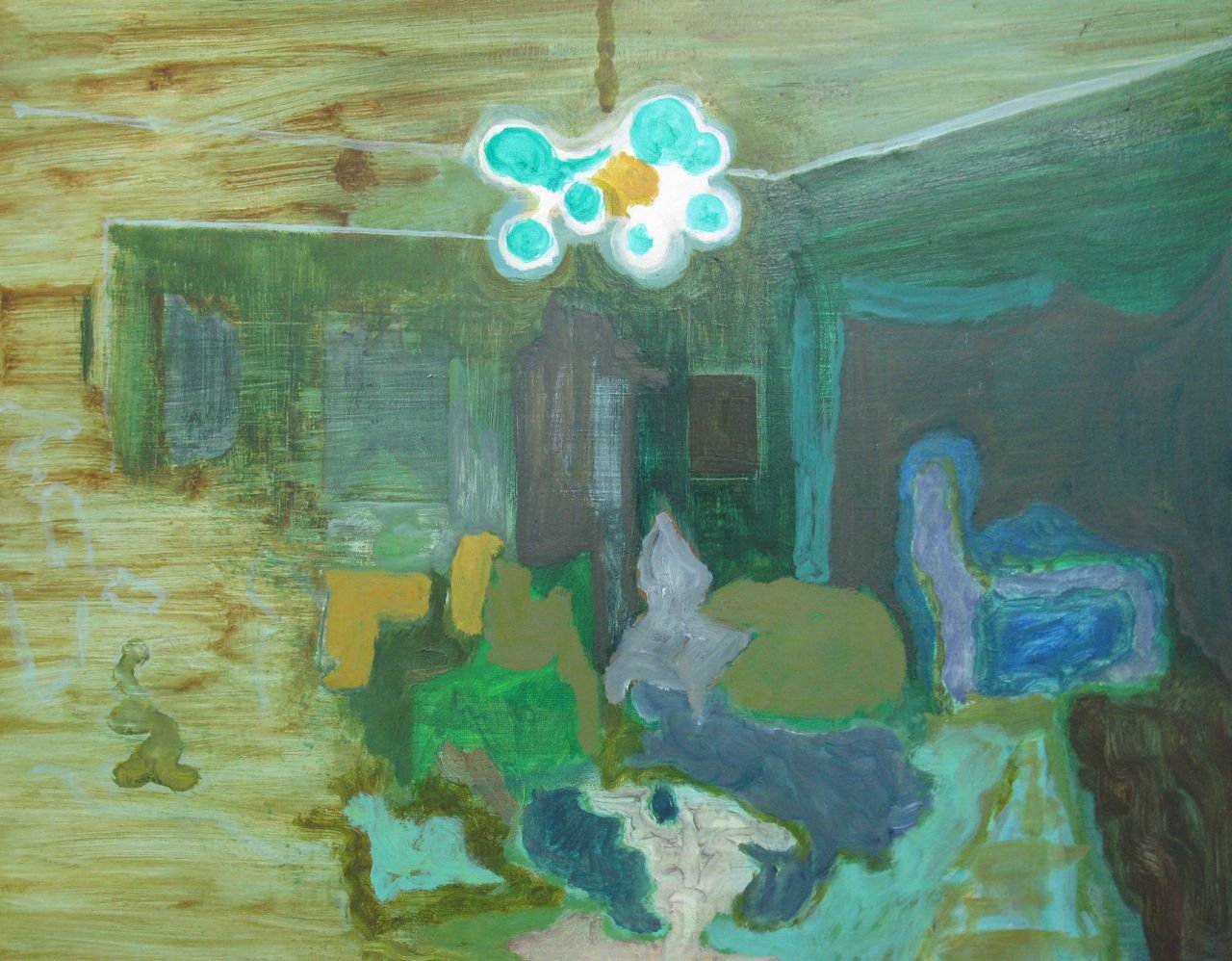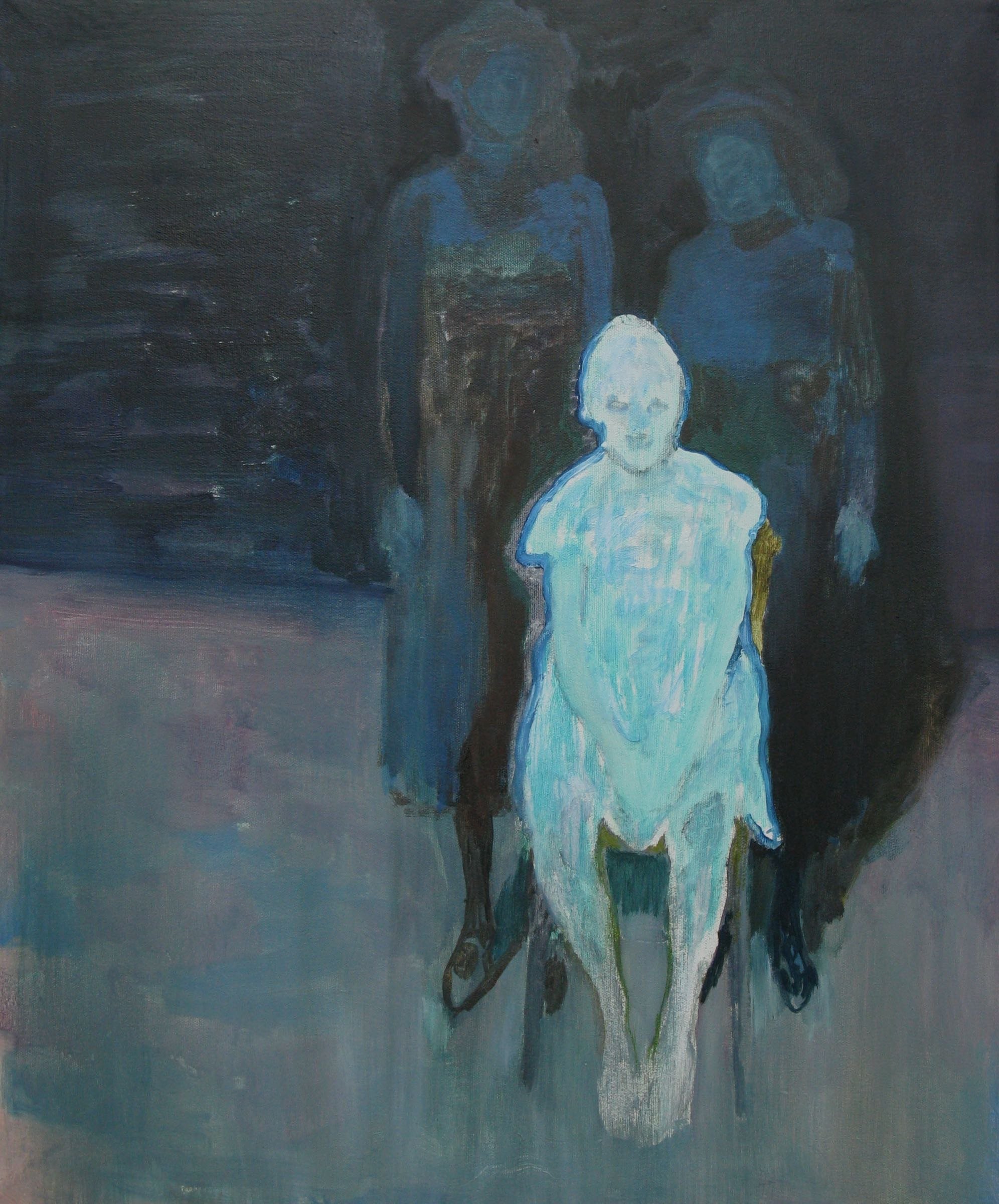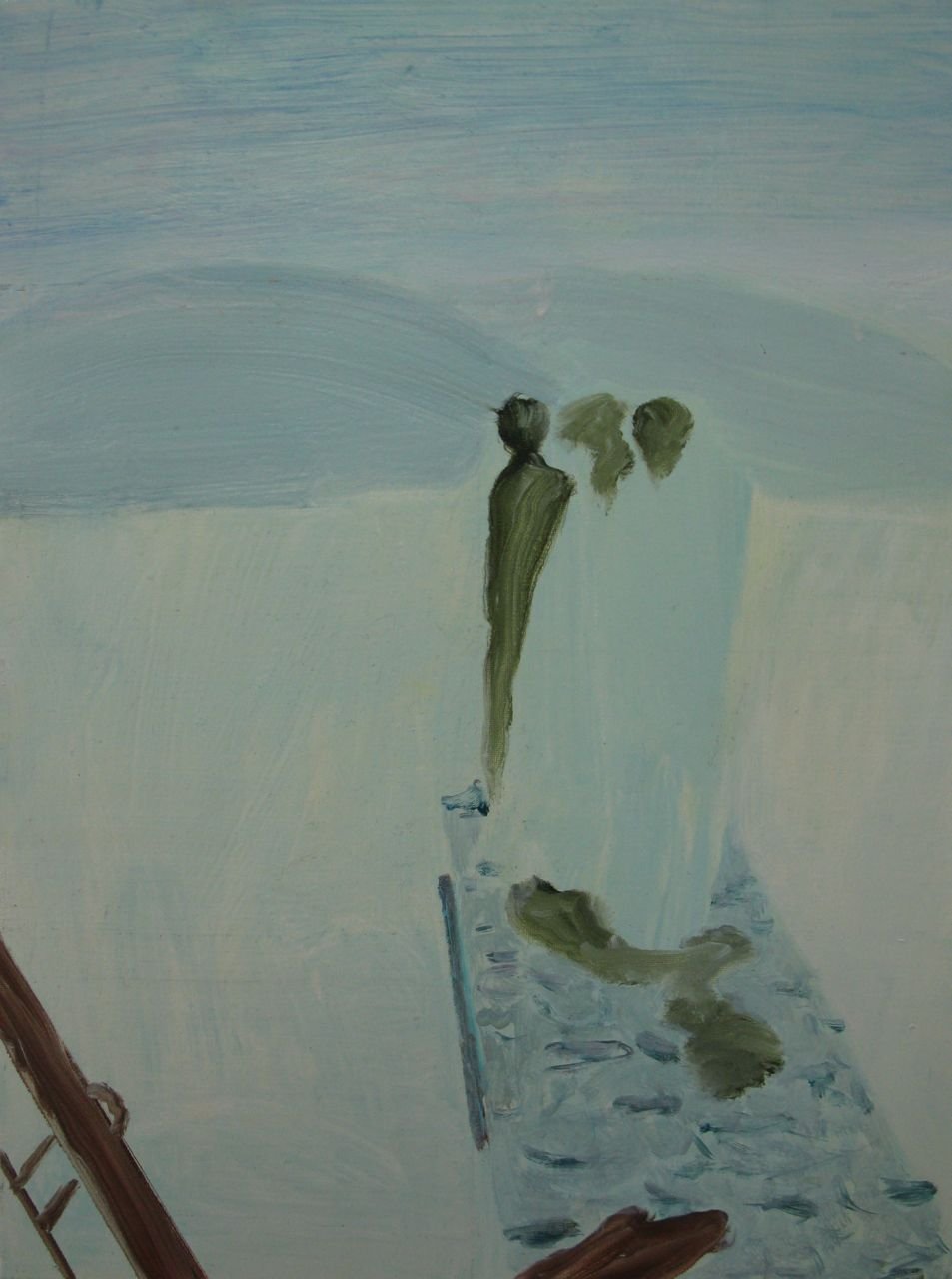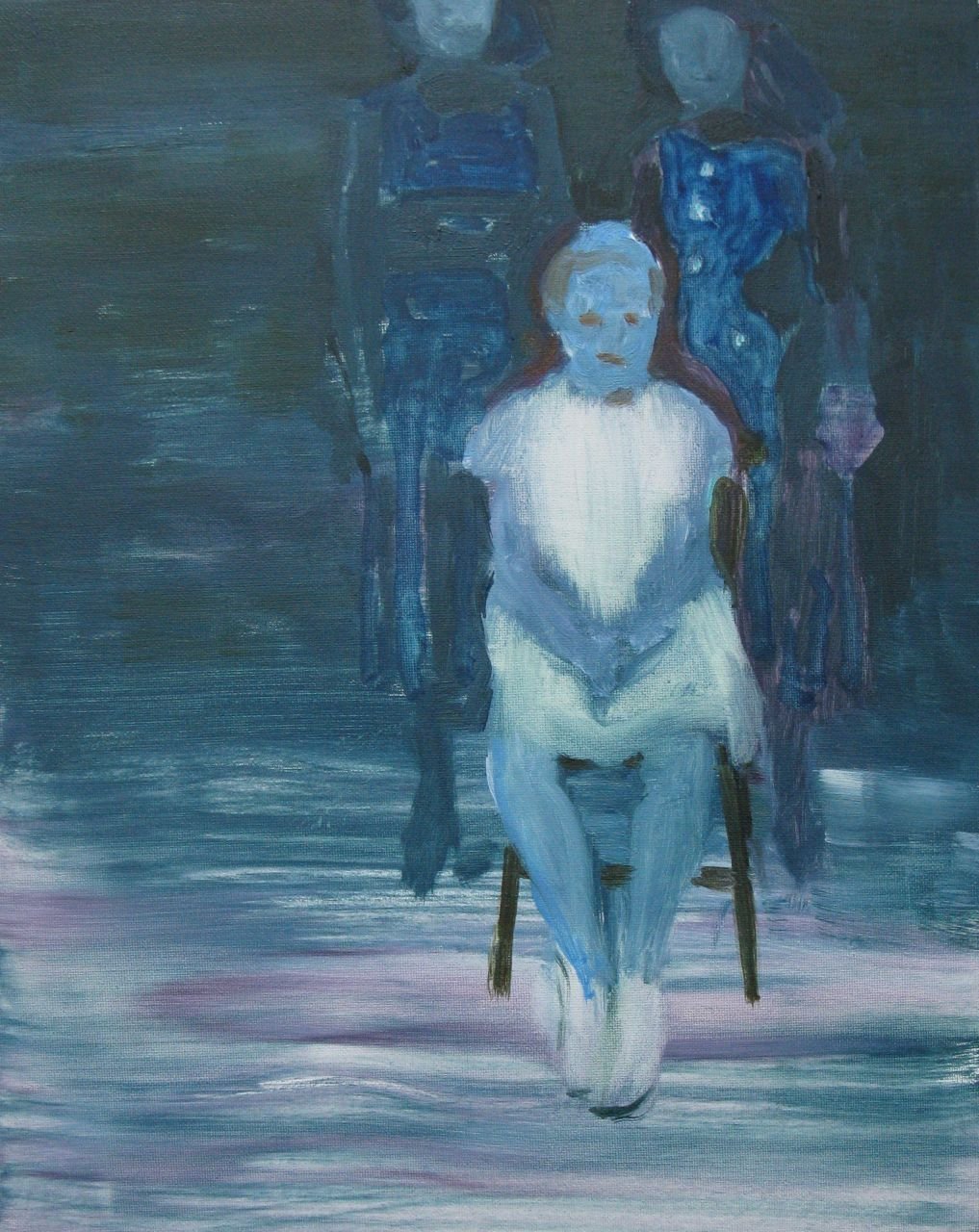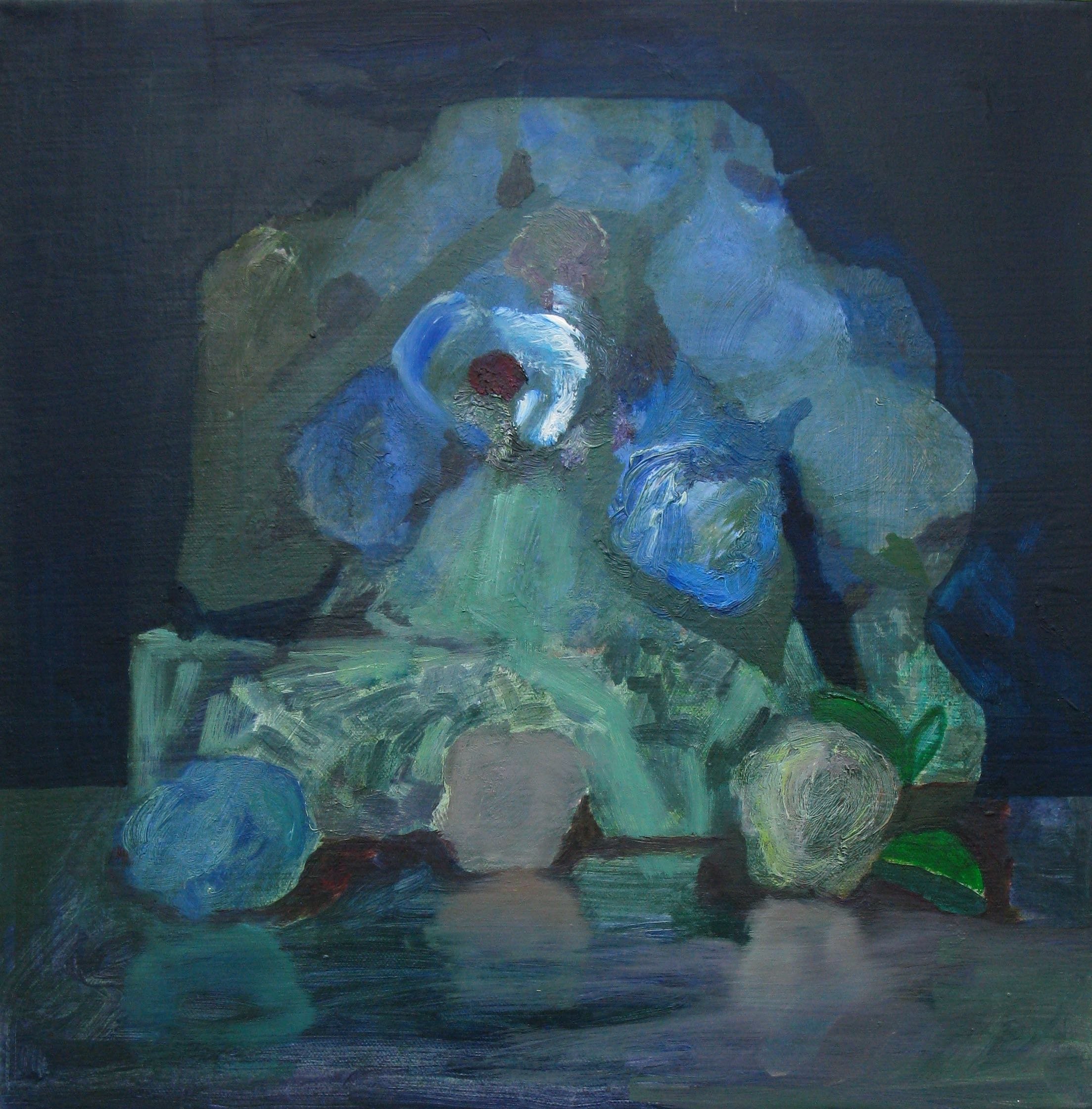Im Wartezimmer
…Moving onwards, I came to an entrance to the central, inner space - four walls, open at the roof, and painted on their interior a shade of (possibly Prussian?) blue. Immediately, it hit you: the green-grey face of the most notorious Austrian man of recent memory, Josef Fritzl. There are other paintings in the space - two dainty portraits of a seated 19th century dandy, a man in a floppy trilby and an abstract mass of forms that slowly reveals itself to be a vase of flowers - but instantly, only one really matters. Unlike the previous two paintings of Austrian men, Austrian Man (JF) (2009) has not been deflated by humorous interventions, but is painted directly in loose, wet paint that dribbles slightly over his brow. This is the dense, cold nucleus around which the rest of the exhibition revolves - perhaps even too dense and too cold for the gaseous debris of half-acknowledged meaning that flies in its orbit.
The 19th century dandy, for instance, is the radical Austrian architect Adolf Loos, mysteriously waving a third hand in one painting and blinking through watery eyes in the second. The painting of the trilby-hatted man, as its title - Freudsack (2010) - confirms, is none other than the world's most famous psychoanalyst and Austria's most influential son. The still life, Fur Waldmuller 1 (2010), is a twilit painting of remarkable virtuosity. Together, these are the finest paintings in the show, but with Herr Fritzl glaring at us from the adjacent wall, it is hard to abandon oneself to their pleasures. Perhaps that is the idea; perhaps his presence provides layers of uncomfortable complexity that would be absent were he not included. It is as impossible to guess as it is to ignore him.
Jonathan Griffin - from Im Wartezimmer review 2010
…Only a few years after the war had ended my parents set off on a motorbike trip to Germany. They had been brought together by a love of classical music. My father came from a huge,very poor family in Nunhead and my mother from a Salvation Army family in Wood Green. Neither would have had the opportunity for foreign travel within their families. But they had at that time a spirit of adventure I think. I think they saw each other as an opportunity to escape; considerable deprivation, in my father’s case, and a puritanical, quite repressive family in my mother’s. This trip, documented in photographs, was another thing I heard stories about.
When I was 6, we started going to Germany for our holidays. My mother learned German, I wore a dirndl dress, my brother had lederhosen (I don’t think he liked that). In some ways, Germany was recognisably ‘elsewhere’ but in other ways it may have been my first lesson that nowhere is ever ‘elsewhere’ when you’re in it.
When I was 12, my parents drove a dodgy car to Yugoslavia for a holiday in the springtime. On the way back we visited my father’s niece (my cousin). She had married an Austrian after the war and had two children slightly younger than myself and my brother. My Austrian Cousins. We went to Vienna.
I seem to have been always thrilled by the words Austro-Hungarian Empire, Hapsburgs and Charles V. I think it may go back to the history stories my mother told me – not really quite understanding what those things were, but hearing the curiosity in her voice.
Many, many years later I decided I wanted to revisit the Wachau. I had also met a man who had been studying the Austro-Hungarian Empire and the writing of Joseph Roth. I read Roth’s The Radetzky March. The visit to the Wachau expanded into a bigger tour of Austria which also took me to Burgenland, the border of Austria and Hungary. The area is flat and strange with a huge Steppe Lake. The towns are built in the Hungarian style – the area was Hungarian until after World War I. My partner and I cycled around, stopping at the vineyards where you can taste the sweet wines.
However, all this is not exactly ‘why Austria’. Because what was fascinating me beyond all this (and perhaps Roth’s book is the way in) was the cluster of values which I found in Austria and all their contradictions.
On reflection it seemed to me that suburbia, the place I’d longed to escape from as a child, was built in some ways on these values. Architecturally it drew inspiration from Austro/German architecture and contained the same repression of individuality.
My work is a lot about repression, not least the repressive, authoritative nature of the image and my pathetic attempt to try and cut through it.
The Waiting Room is Freud’s Waiting Room: Freud the patriarch and ‘father of psychoanalysis’ who tried to take the lid off the repressive Austrian society. It is also the basement where Fritzl (the bad father) kept his daughter. But it also refers to a more personal sense of limbo or waiting that I have always felt about my own life (waiting for permission to get on with it) which seems to be the inheritance of a 19th century attitude to women which was still pervasive as I grew up.
EM 2010


